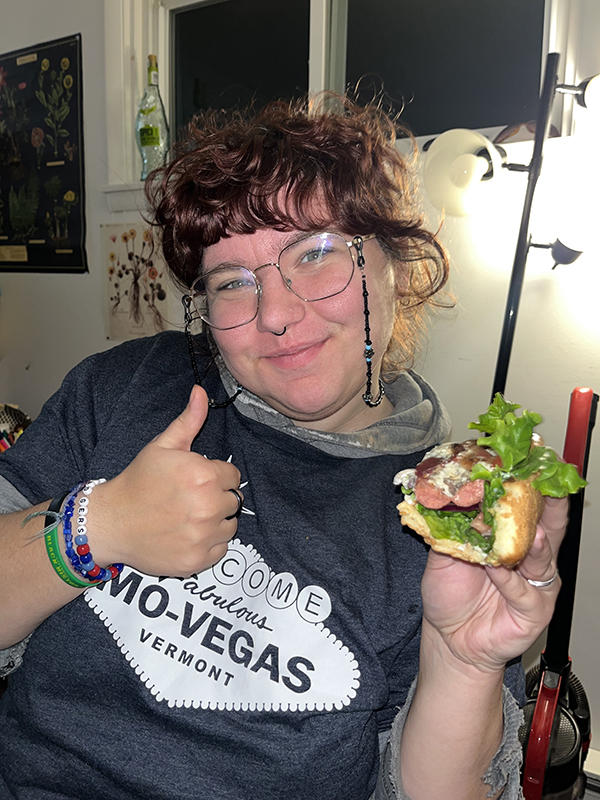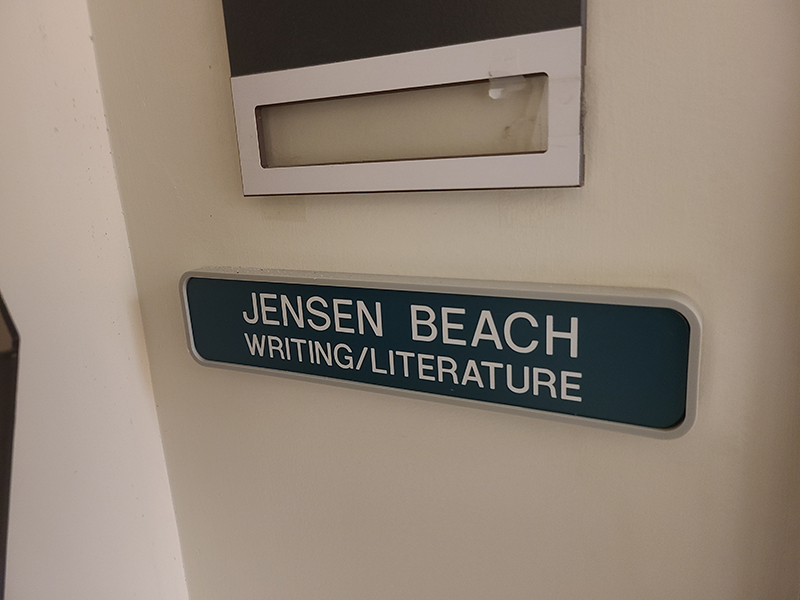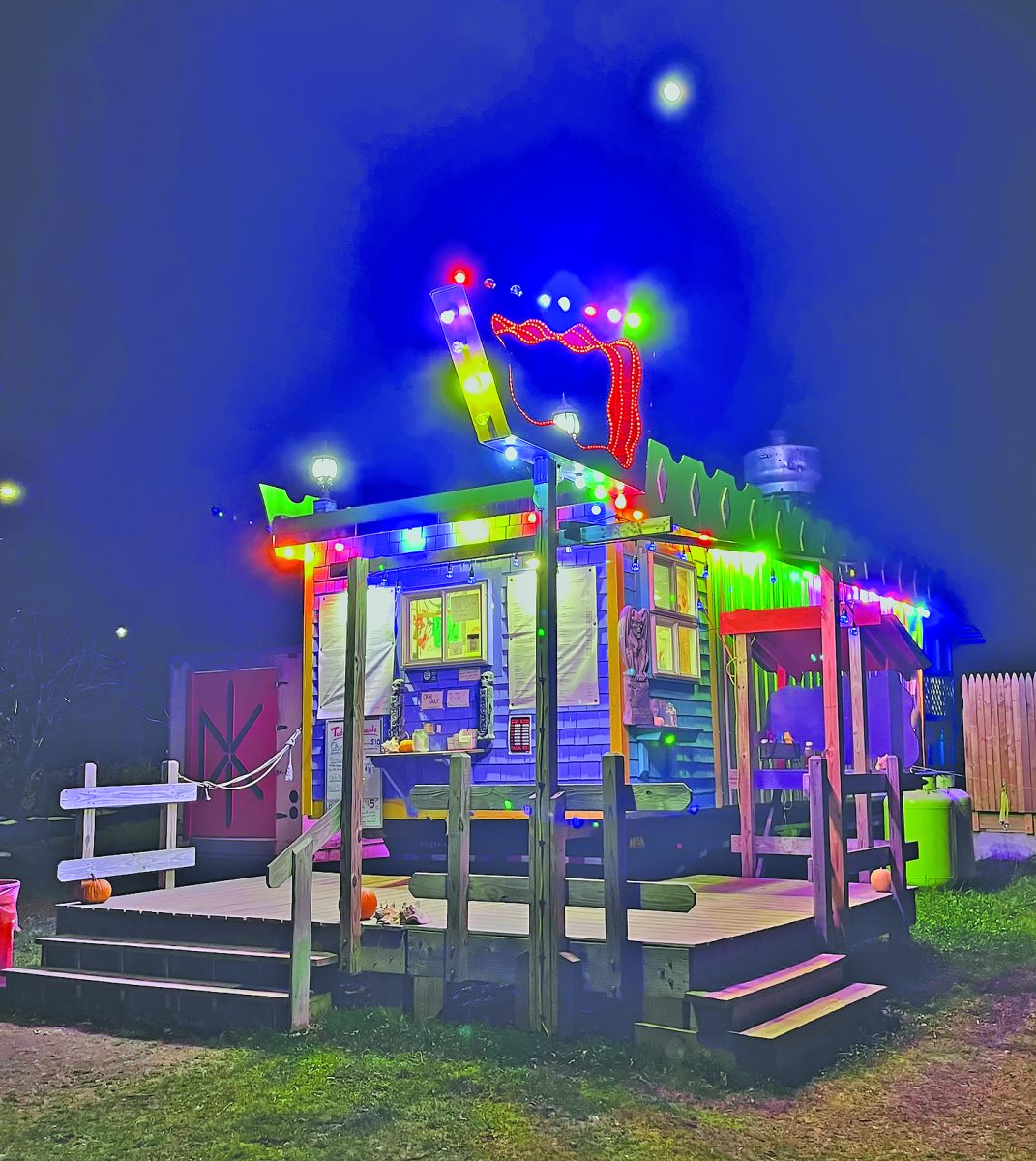In response to student feedback, JSC Dining Services has once again changed the Late Night.
The updates to the program include a new location in the Stearns coffee shop, a menu that reflects the grab-and-go vibe of last year’s Late Night, and additional items to the menu, such as personal pizzas made to order and grilled chicken sandwiches (not to mention additional burger and sandwich fixings). Now students can grab a bottle of soda and some mozzarella sticks before retiring to the lounge to chat in front of a cozy fire to the sound of the WJSC radio broadcast.
Dining Services General Manager Tom Fondakowski attributed the changes primarily to student feedback about the previous set-up, where Late Night was held in the Stearns dining hall in the form of a buffet with extra purchase options. Last year, Late Night was held in the Stearns Performance Space and featured many of the same snacks now being offered. At the beginning of the Fall 2012 semester, the program was moved into the dining hall and revised to focus on providing more substantial meals rather than take-out snacks and bottled beverages.
However, last semester’s changes backfired with many students. Sophomore Amelia DeNagy disliked the feeling of the set-up in the dining hall, as it seemed to have become just another meal. “When it was down in the cafeteria I didn’t really like it because the friendly ambiance of Late Night that was there before was gone and it was just like going to lunch or something.”
Ericka McCormick, also a sophomore, agreed: “I didn’t like [the changes]. I thought that the fourth meal seemed excessive and too expensive. I didn’t want to eat a whole meal at 11 at night. Sometimes when you’re studying you just want something more like Skittles or chips or something, you don’t want a plate of spaghetti or a salad.”
According to Fondakowski, the change was particularly intended to provide athletes forced to skip dinner for practices or games an option for a healthy, full meal. “The main reason that [we] wanted Late Night in the dining hall was because the number one complaint was no one could get a meal when they wanted it,” he said. “So, if we had Late Night dining, all the students that missed dinner could go to Late Night. What I never realized when I offered to expand the hours in the dining hall [is that] now everyone’s being fed.”
The expanded dining hall hours removed the need for a meal-based Late Night, and the feedback the program received reflected students’ disappointments. In addition to the comment cards students could fill out, Fondakowski and Assistant Dean of Students Michele Whitmore held dining services advisor committee meetings in the dining hall during mealtimes to talk with students about changes that needed to be made. Student Government Association Senator Nasser Abdel-Fatah brought up the matter at SGA meetings, and collaborated with Whitmore and Fondakowski on ensuring that students’ voices were being heard in the process of improving the Late Night program.
Fondakowski was inundated with student input: “The overall response was ‘we want the snacks that are in the coffee shop and the C-store. We want the groceries. We don’t want a meal. We want the option of buying snacks.’ They wanted to be able to take it to their rooms.” Input from the SGA let him know that students did not want to return to exactly the same system in the performance space, where the food would sit for hours if it was not sold quickly. “[The students] don’t want food that’s been sitting under a warmer forever and pizza that’s hard as a rock…they want this fresh, but they want it with the snacks, and they want it in a space where it’s not the dining hall,” said Fondakowski.
Now, the a la carte items are made in small batches throughout the night in reflection of the amount of demand. “Anything left over [that hasn’t been assembled for sale during Late Night] we can turn into something the next day,” said Fondakowski. “So the leftover grilled chicken—we can turn it into grilled chicken Caesar salads the next day. We grind up the unused burgers and turn it into meat sauce, or chili.”
The sales certainly reflect student reactions to the new changes. Depending on the day of the week, Fondakowski said that sales have doubled or even quadrupled in comparison to sales from last semester. “The Late Night staff said the sales are higher now than they were in the performance space [last year],” he said.
Not everyone is thrilled with the change. Freshman Asim Khan said he preferred the buffet-style Late Night of last semester. “I feel like you can get more food that way, and pay once,” he said. “I could go in there and take three burgers, put one burger in my pocket and I’d only have to pay the minimum amount. [The new set-up] is a lot more organized so I do like it, the food seems to taste better. I don’t have a problem with it but I do like the other one better.”
DeNagy is happy with the new changes. “It’s different [from last year], I don’t think it’s worse or better,” she said. “It’s definitely an improvement from the cafeteria…Now I think it’s a lot better, it feels a lot more friendly and nice.”
Students are also coming away from this experience with the feeling that they are being listened to when it comes to their food. “At first, when the comment cards went up, I was like, ‘Oh, they’re not actually going to listen, they just want to look good,’ but it’s pretty clear that they’re trying to work with us,” said DeNagy. “Tom seems really into listening to the students and trying to make Johnson better.”




